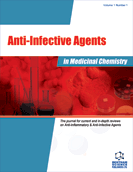Abstract
The introduction of penicillin in the 1940s, erythromycin in the 1950s and methicillin in the 1960s was quickly followed in each case by appearance of resistance to these antibiotics. By comparison, glycopeptide resistance required nearly thirty years to appear following clinical introduction of vancomycin. The reason for the delay is likely related to the clever mechanism of action of glycopeptide antibiotics. These antibiotics interfere with biosynthesis of the bacterial cell wall by binding to a critical cell wall intermediate. High level resistance required a collection of genes to reorder cell wall biosynthesis enabling bacteria to bypass the critical steps susceptible to inhibition by vancomycin and other glycopeptide antibiotics.
There have been various efforts, with mixed success, to identify novel glycopeptide structures able to circumvent high level glycopeptide resistance. This review focuses on the discovery and development of oritavancin, a lipoglycopeptide antibiotic having exquisite activity against staphylococci and other gram-positive bacteria including MRSA and those resistant to high concentrations of vancomycin. The oritavancin story includes a combination of natural products screening, medicinal chemistry-directed modification, and extensive microbiological, biochemical, pharmacological, and clinical evaluation. The story behind this agent also reveals the pharmaceutical business and regulatory challenges that can have a major impact on development of new antibiotics and obtaining regulatory approval for clinical useage.
Keywords: Glycopeptide, lipoglycopeptide, vancomycin, teicoplanin, chloroeremomycin, oritavancin, transglycosylation, transpeptidation, acyl-D-Ala-D-Ala, alkyl, glycopeptide resistance, dimer
 44
44





















